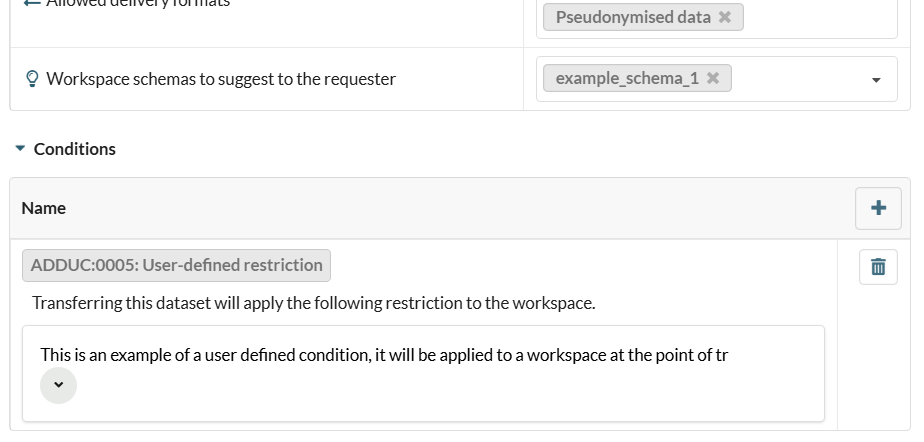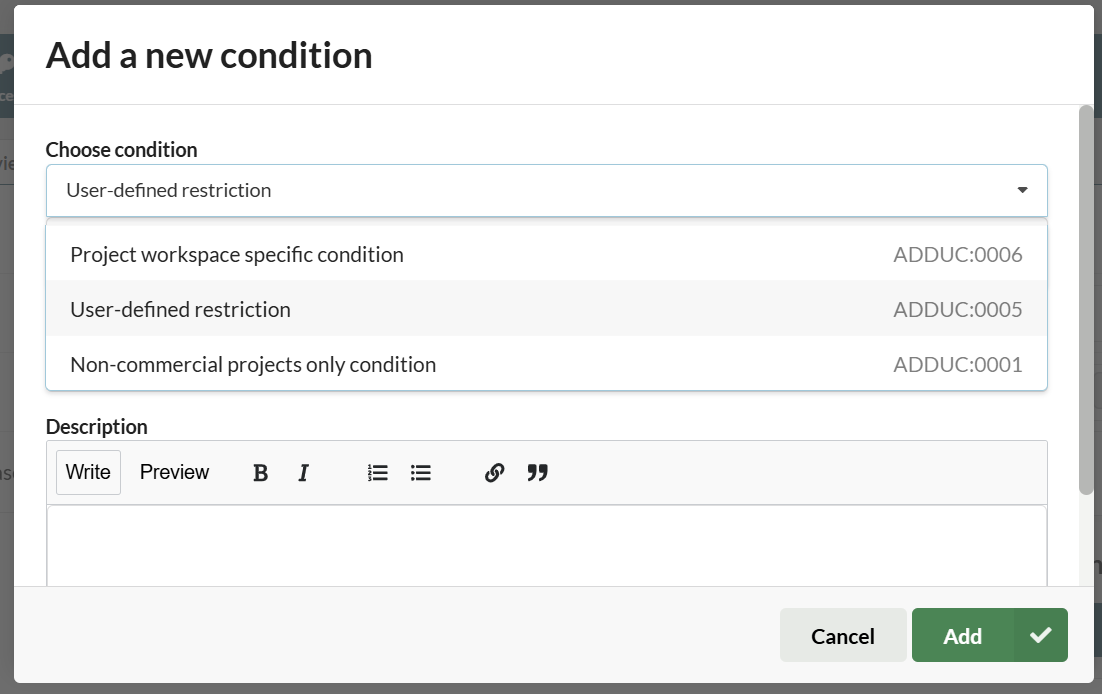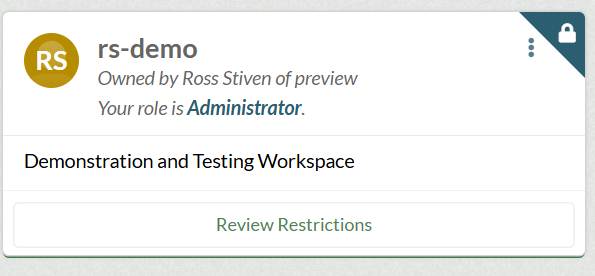Applying dataset conditions and restrictions
The FAIR conditions framework allows data owners to apply conditions and restrictions to their dataset. This article explains how these differ, and how they can be applied to a dataset.
Conditions vs restrictions
Dataset conditions act as a filter, where a dataset has a condition applied, users submitting a data access request for that data can only select destination workspaces that meet that condition e.g. it is hosted in an approved Azure region.
Dataset restrictions do not act as a filter. Instead they allow for workspace [restrictions] (https://knowledgebase.aridhia.io/workspaces/workspace-administration/workspace-restrictions) to be added to dataset, and then automatically applied to any workspace the data is subsequently transferred to.
Conditions and restrictions are not mutually exclusive. A condition could be applied to ensure data is transferred to a compliant workspace, and a restriction could also be applied that then manifests on the destination workspace at the point of transfer.
Adding a condition to a dataset
A condition can be added by navigating to the conditions menu on the dataset admin tab:

This contains all supported conditions, at present the options are:
| Condition name | Description |
|---|---|
| Non commercial projects only condition | Data with this condition can only be transferred to workspaces used for non-commercial projects |
| Project workspace specific condition | Data with this condition can only be transferred to a named workspace |
| Geographic restriction | This allows data owners to restrict data transfer to workspace hosted in approved Azure regions |
| User defined restriction | See below for more detail on user defined restrictions |
Adding a workspace restriction to a dataset
These can be added to the dataset from the dataset admin tab by selecting user-defined restriction from the conditions menu.

The data owner has the following options:
- Text - the data owner can add details of data usage conditions and restrictions directly to the dataset using the markdown editor. The full text is visible to users in the FAIR UI
- Link - the data owner can provide a link to an external document which details any data usage conditions and restrictions. The link and its description are visible to users in the FAIR UI.
- Attachment - the data owner can attach a document that contains any data usage conditions or restrictions. The document is visible from the FAIR UI and can be downloaded by users.
What happens when a restriction or condition is applied to a dataset?
When a restriction has been added it will be visible to all users browsing the dataset as part of the dataset status:

Dataset conditions are also visible to users in the browse, search and data access request tabs.
As detailed above, when a DAR for a dataset with a user-defined restriction is approved, the restriction will be applied to the appropriate workspace at the time of workspace creation or data transfer:

Once the restriction is applied, it behaves in the same way as a restriction manually added to a workspace by a Tenant Admin.
